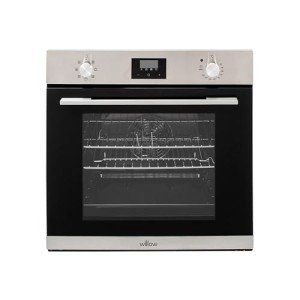10 Things We Do Not Like About Integrated Oven Sizes
Understanding Integrated Oven Sizes: A Comprehensive Guide
Integrated ovens have become synonymous with contemporary cooking areas, providing smooth aesthetic appeals and efficient cooking solutions. As house owners objective for a seamless look in their culinary areas, understanding integrated oven sizes ends up being important for enhancing kitchen layouts and making sure effective cooking. This article dives into the different integrated oven sizes available in the market, their dimensions, and how to select the ideal one for your home.
What is an Integrated Oven?
An integrated oven is developed to be built into kitchen cabinets, supplying a streamlined appearance that blends easily with the rest of the kitchen. Unlike freestanding models, integrated ovens can be concealed behind cabinetry doors or located at eye level, making them a popular choice for contemporary kitchen areas.
Secret Features of Integrated Ovens
- Space-saving style: Optimizes kitchen area without compromising design.
- Customizable surfaces: Available in numerous colors and materials to match kitchen decoration.
- Advanced technology: Often geared up with contemporary features, consisting of smart innovation, varying cooking modes, and energy-efficient operations.
Common Integrated Oven Sizes
When thinking about an integrated oven, the most vital aspect to assess is its size. Integrated ovens can be found in numerous measurements, typically designed to fit standard kitchen cabinets. The following table describes the most common integrated oven sizes:
Oven Type
Height (mm)
Width (mm)
Depth (mm)
Cooking Capacity (litres)
Single Built-In
590
595
550
60-70
Double Built-In
590
595
550
60 (each oven, overall 120)
Compact Built-In
450
595
550
30-40
Mix Microwave
455
595
550
30-40
Wall Oven
720
600
550
70-90
Factors to consider When Choosing an Integrated Oven Size
When it pertains to picking the appropriate size for an integrated oven, there are a number of factors to think about:
- Kitchen Layout: Evaluate your kitchen area and choose where the oven will be integrated into kitchen cabinetry.
- Cooking Needs: Consider how frequently you prepare and your cooking choices (e.g., baking, roasting).
- Readily available Space: Measure offered cabinetry measurements to ensure the oven fits snugly.
- Capacity Requirements: Assess the size of meals you typically prepare, especially for families or when amusing guests.
- Future-proofing: Think about incorporating trends such as wise innovation or flexibility in usage.
Types of Integrated Ovens
Integrated ovens are readily available in numerous types, each offering special advantages:
- Conventional Ovens: Standard cooking functions, suitable for the majority of cooking techniques like baking and roasting.
- Steam Ovens: Utilize steam for cooking, best for healthier dishes, maintaining moisture and nutrients.
- Convection Ovens: Circulate hot air for even cooking, excellent for baking pastries and multiple meals at the same time.
- Microwave Ovens: Offer fast reheating or defrosting alternatives and can be integrated with conventional ovens for versatility.
Advantages of Integrated Ovens
Integrated ovens provide numerous benefits that can enhance the cooking experience:
- Aesthetics: Offers a tidy design that fits perfectly into any kitchen décor.
- Area efficiency: Maximizes space by utilizing built-in cabinetry.
- Ergonomics: Mounting ovens at eye level enhances convenience and safety when getting rid of hot dishes.
- Increased functionality: Many integrated choices include features such as self-cleaning and clever connection.
Often Asked Questions (FAQs)
1. What is the basic size for an integrated oven?
The most common size for a single built-in oven is roughly 590mm in height, 595mm in width, and 550mm in depth.
2. Can I install an integrated oven in an existing kitchen?
Yes, as long as the existing cabinets can accommodate the size and requirements of the selected oven, it can be integrated effortlessly.
3. Do integrated ovens have a larger capability than freestanding ones?
Generally, integrated ovens have an equivalent capacity to freestanding models; however, particular styles might differ. Always inspect the specs for ideal space and capability.
4. Are integrated ovens more costly than freestanding ovens?
Incorporating an oven can be more costly due to setup and customization. However, costs vary based on brand name and technology, so it's vital to compare alternatives.
5. Is maintenance various for integrated ovens?
Maintenance for integrated ovens resembles that of freestanding designs but may require more care with built-in cabinets components. Routine cleansing and understanding the oven's functions are essential for durability.
Picking the ideal integrated oven size is essential for enhancing kitchen space and improving cooking experiences. By comprehending the various configurations readily available and considering individual cooking requirements, property owners can flawlessly integrate a modern-day oven into their kitchen areas. With a variety of styles to suit diverse visual appeals and performances, integrated ovens stay a popular choice for contemporary cooking areas. Whether hob and built in oven package or developing a new kitchen, selecting an integrated oven customized to your needs will make sure years of complete satisfaction and cooking creativity.
